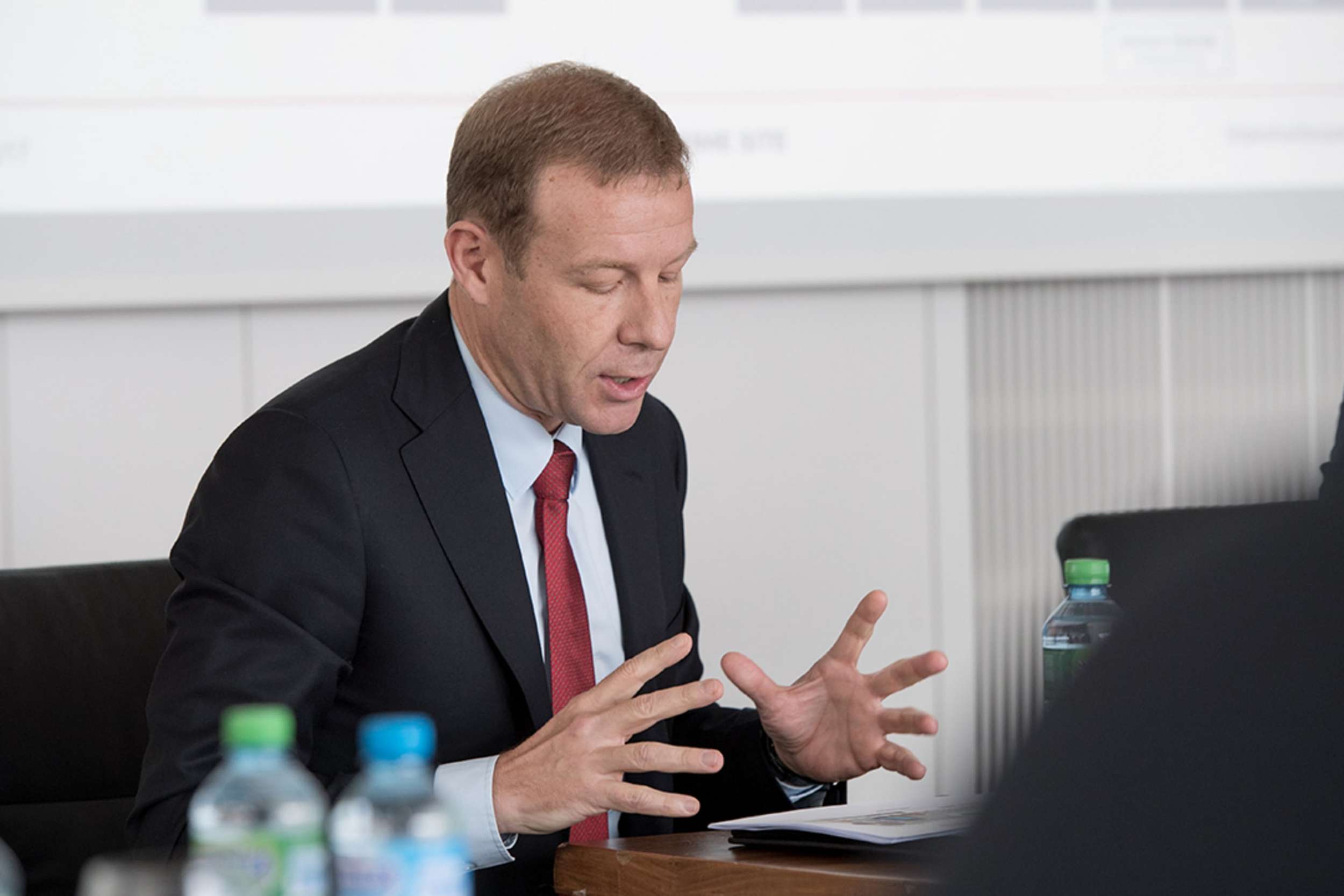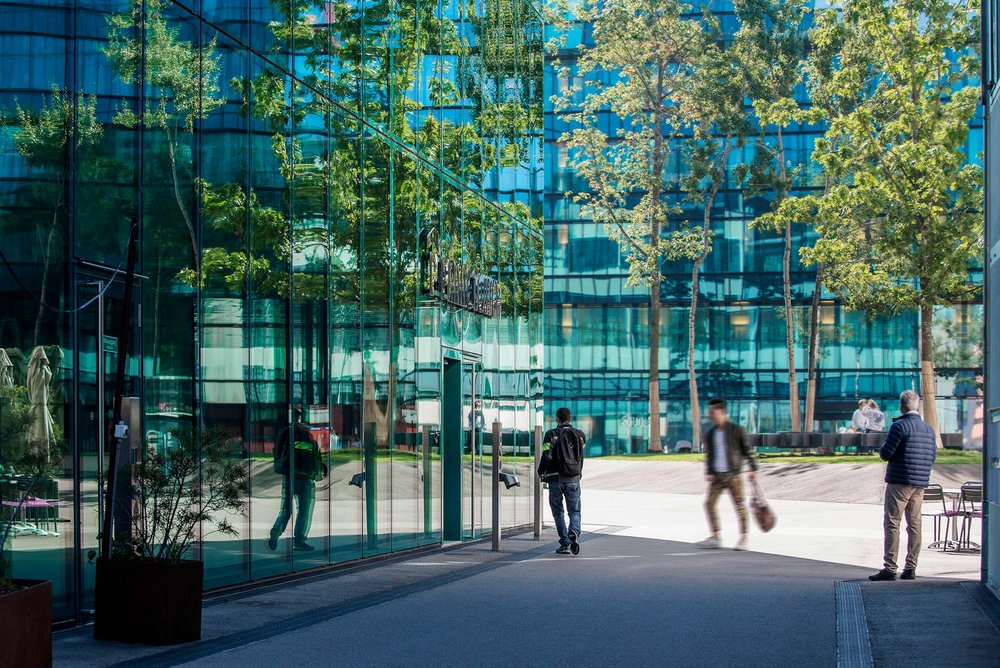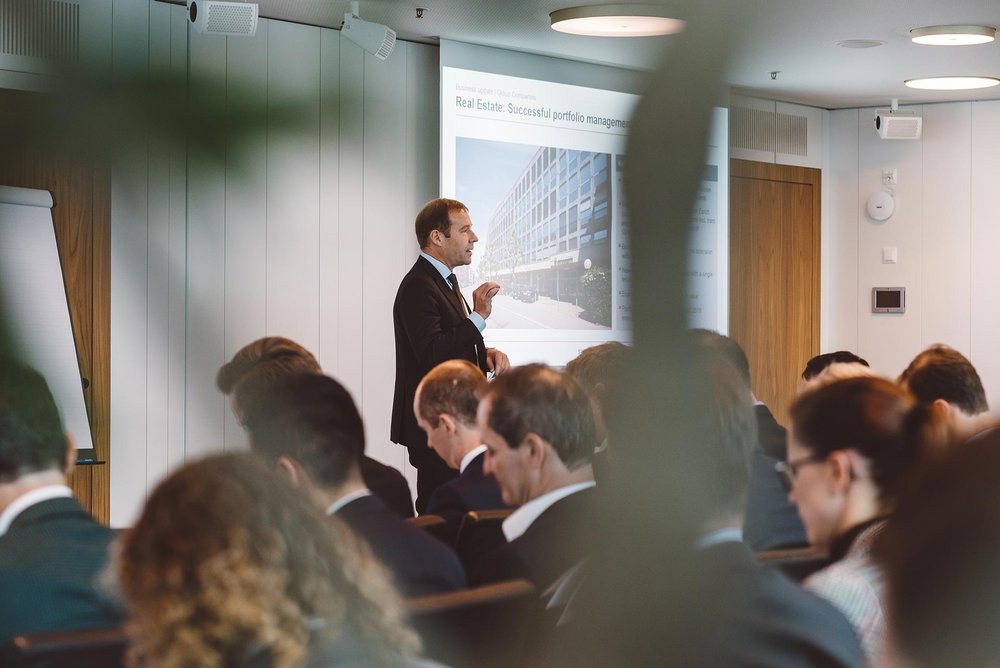Story Detail
Sustainability is future viability
René Zahnd, real estate prices are increasingly climbing and, in turn, the value of Swiss Prime Site is rising as well. When will we see the summit?
The trend on the markets was actually positive once again. This was also manifested in the revaluation gains amounting to CHF 65.9 million that we were able to realise in 2017. However, noteworthy is that the market trend is easing.
Are you satisfied with the financial year 2017?
Yes, but there’s always potential for improvement. The 2017 reporting period was a successful financial year. We achieved our financial targets, expanded the real estate portfolio significantly again and with first-class properties, as well as reduced the vacancy rate to the low level of 5.2%. In addition, we forged ahead with important projects.
Can you be more specific?
We succeeded in boosting operating profit (EBIT) by 2.4% to CHF 470.6 million. At the same time, the core Real Estate business generated a roughly 90% contribution. The real estate portfolio currently shows a fair value of CHF 10.6 billion and grew by 5.4% in 2017. Regarding vacancy rate, we are now coming to a point that we refer to as base vacancy rate, where we still see potential.
What were the milestones in 2017?
I’m most pleased with the very favourable development of our project pipeline, with total value of CHF 2.1 billion. For example, we were able to start up construction of the key «Espace Tourbillon» project in Geneva. At the same time, we also succeeded in selling a significant share of the project to the Hans Wilsdorf Foundation. We commenced construction of the innovative «YOND» building complex in Zurich too, which is very closely oriented to the flexibility-related needs of our customers. And we were able to initiate a turnaround with «Stücki Park» in Basel, where we will expand the property with laboratory, research and office floor space, scale back the share of retail space and render the site more permeable for all types of use.
There’s widespread belief that Switzerland is fully built. Where do you still see growth potential for Swiss Prime Site?
No place is ever completely constructed. Structures that were built 20 years ago or earlier can, in some cases, be subject to critical scrutiny or should be redeveloped. Generation Y, which is increasingly influencing and shaping the economy, has totally different perceptions of utilising spaces and offices than past generations. But demographic changes provide potential as well. People today seek a different lifestyle than in the past. In addition to these external factors, we also have inherent favourable opportunities for achieving growth. Our project pipeline is full and we have substantial land reserves at our disposal.
Based on the current balance sheet, can you ideally navigate a path toward growth?
We have a solid equity ratio of 43.1% and are also able to raise money on the bond market should that be necessary for funding growth projects. Moreover, we are pursuing active capital and portfolio management with the partial divestment of development projects.
What are your expectations regarding tightening of Lex Koller?
There is no motive for tightening Lex Koller, which is why we reject the proposed changes overall. The acquisition of real estate by persons abroad is sufficiently regulated. The Swiss Federal Council should subject the extension proposals to another review.
So rising rent prices have nothing to do with demand on the part of foreigners for property?
That’s correct. The Swiss real estate market is dominated by domestic investors. Rents are climbing due to demand for more floor space, a growing number of households and investment pressure from Swiss pension funds and insurance companies.
Isn’t investment pressure indeed an advantage for Swiss Prime Site?
We’re benefiting as a result because our products enjoy strong demand. However, acquiring existing properties that are as fully leased as possible and situated in good locations at reasonable yields is almost no longer possible.
How do you view sentiment on the Swiss office property market?
A good overall concept and a location with ideal proximity to infrastructure are decisive factors. Another important aspect includes flexibility on the part of tenants regarding interior design standards and rental agreements. Just the supply of office floor space to be constructed in the Zurich region in the coming months will already lead to additional pressure on the market. Demand is still robust in prime locations, and office properties in city centres are popular again.
What measures are you taking to avert vacancies in your real estate portfolio?
The better the location and quality of the property, the less pronounced the probability of a vacancy. We invest very extensively in our portfolio and place value on a high degree of flexibility of use. We ultimately also reap benefits from the fact that we are in very close prox-imity to our customers through our property manager Wincasa and therefore quickly know when there’s a need for action.
You highlighted the phrase in a past interview that a vacancy rate of 4% – 5% could certainly be healthy. Are you sticking to that comment?
Vacancies initially always sound negative. But taking a closer look reveals that vacancies are not so dramatic – on the contrary. There’s always a certain base vacancy rate, which is normal. Given a real estate portfolio of our size, this can pose a significant advantage for our client relationships under certain circumstances. Tenants can achieve further development within the scope of our real estate holdings, since we very often find a new suitable location within our portfolio given changing needs.
You’re aiming to step up self-development activities. Why?
Self-development projects increase independence from the transaction market. We therefore generate additional growth in rental income and can boost profitability because we are involved in the entire value-creation chain. Also noteworthy is the fact that we acquire further know-how as a result and are able to determine the degree of sustainability of properties directly.
Can you give us a couple of examples of such self-development projects?
Consider the Motel One hotels in Zurich and Basel, where big banks had previously occupied these locations and moved to the suburbs. Hence, two large buildings remained in the centre of these cities. We decided in favour of business hotels. The situation with the new Prizeotel in Berne painted a similar picture. The former Swiss Post headquarters was too large for the city as an office building. Now, the «Schönburg» complex featuring a hotel, fitness centre, rental apartments and retail floor space is fully leased once again.
The term «real estate-related business fields»: What do these provide for you?
The vertical integration of our group companies in our business model enables us to cover the value-creation chain practically seamlessly. From the acquisition of a property to analysis, development, project planning, financing, management, and utilisation until potential sale, we are able to provide support in every aspect, which presents us with a clear competitive advantage.
How has the competition changed in this regard?
Noteworthy is that other market participants are moving in the same direction and also «incorporating» services providers into the business model.
With Jelmoli – The House of Brands you have your own retailer in the Group. In addition, roughly one-third of the floor space in your property is leased to other retailers. How are you dealing with the crisis in the retail trade?
The stationary retail trade today most definitely poses a challenge. Nevertheless, our group company Jelmoli is trending on a favourable course, achieving sales growth in the past year. Much of the floor space in the portfolio is situated in exclusive locations, which continue to trend favourably.
Will the Company therefore continue to hold on to Jelmoli?
Certainly. Indeed, the significant success of the «House of Brands» has a decisive impact on the value of the building, which currently amounts to CHF 824 million. Without a sound tenant the building would also lose value despite the centralised location.
You’re opening a Jelmoli location at Zurich Airport. Why?
We anticipate a positive effect from Sunday shopping in particular, in addition to economies of scale. Furthermore, the location enables us to embrace international top brands and particularly acquire new customers too.
Everyone is talking about digitalisation in commerce. What does the picture in the real estate sector look like in this context?
Digitalisation has grasped society as a whole. There’s hardly any sector that has been unaffected by the trend. Building Information Modeling (BIM) has completely digitalised the planning and execution process today. Consequently, we have more precision, enhanced efficiency and ultimately lower costs too. Whether architect, sanitary planner or statistician: All are working on the same virtual 3-D model. Hence, workers know, for example, where the engineer plans to lay the cable precisely to the degree of a square centimetre.
Has digitalisation also had effects on Wincasa’s property management business?
The greatest changes will occur here. Viewing properties will no longer have to be carried out on site. Instead of us leading 100 interested parties on a tour through a property, they could view the building through a virtual tour via their home computer and submit an application online – directly through the credit rating screening system to Wincasa. In the intelligent buildings of the future, many tasks will be performed fully automatically or requested by the residents via app regardless of location.
Is Wincasa’s business model at risk as a result?
No. Wincasa is the leading company in the realm of digitalisation in its segment. We are investing a substantial amount in order to continue operating on the front lines here. Consequently, the job profile for property managers will adapt accordingly. We will use digitalisation in the future precisely where it really plays a significant role – for customers.
One of your growth paths is the assisted living business field. How satisfied are you here and what do future plans look like?
We were able to open four new locations in 2017, expanding the network to 76 business operations. The pace of growth initiated is challenging albeit achievable. The demographic trend provides benefits to us through Tertianum. People are living longer and longer lives and remaining relatively healthy, which is also reflected in our business model. We are now increasingly building geriatric care centres instead of senior residences because the age of admittance of our guests has risen. We aim to expand the number of Tertianum locations to roughly 90 to 100 in the coming three years.
You’re seeking partnerships with municipalities. Wouldn’t that be a public-sector responsibility?
The funds that the public sector invests in institutions could actually be utilised for other accomplishments. Therefore, municipalities such as Richterswil are entering into partnerships with us. We are constructing and financing a geriatric care centre there and even assuming operations with Tertianum – providing everything from one source. The standards of quality of senior care naturally define the state.
You’re one of the CEOs of a large Swiss company that is strongly committed to sustainability. Why?
The strategic focus on sustainability is associated with a company’s future viability. Without sustainability-oriented management at all levels, no company can be successful from a long-term perspective. At the same time, sustainability is a comprehensive concept. There’s no use in constructing properties from the ground up as inexpensively as possible when, in terms of concept, they do not meet customers’ needs, the technology is out-of-date, or the location is sub-standard. All these factors and even many more combined determine whether a company is successful on the market. This year, we reveal the way we approach sustainability as well as how we integrate the concept in our mindset and actions in a comprehensive separate report.
What are the challenges for Swiss Prime Site and how are you preparing to face these?
The overall retail business field within our existing portfolio certainly continues to pose challenges. Up to now, however, we have dealt with the situation well and managed to renew significant rental agreements at the same or better conditions. Moreover, finding good acquisition properties is not very easy at present. The competition – even from other sectors – is tough. In this regard, our existing portfolio of buildings is ideal, with which we are able to forge ahead with self-development and redevelopment projects and foresee consolidation potential. In addition, we boast an attractive project pipeline with substantial reserves. In this way, we are mastering the future challenges.
What are your goals for the financial year 2018?
The course has been set for a prevailing positive performance. The targets set for the financial year 2018 include growing operating income and EBIT before revaluations. Successful leasing activities and a renewed reduction in the vacancy rate will lead to a significant surge in rental income. Income from real estate development will once again provide a significant contribution to EBIT. Swiss Prime Site anticipates a further boost in income from the Services segment. And finally, further growth of the real estate portfolio and a well-filled development project pipeline valued at roughly CHF 2.1 billion will pave the way for a stable and attractive distribution to the shareholders.
Are you therefore looking to the future with optimism?
Indeed, I am optimistic. But we must and will remain focused in all our business fields in order to continue on the road to success, which we have achieved very well to date.



![[Translate to Englisch:] [Translate to Englisch:]](/fileadmin/_processed_/2/b/csm_CO2-Kennzahlen_11_ea6896977c.jpg)